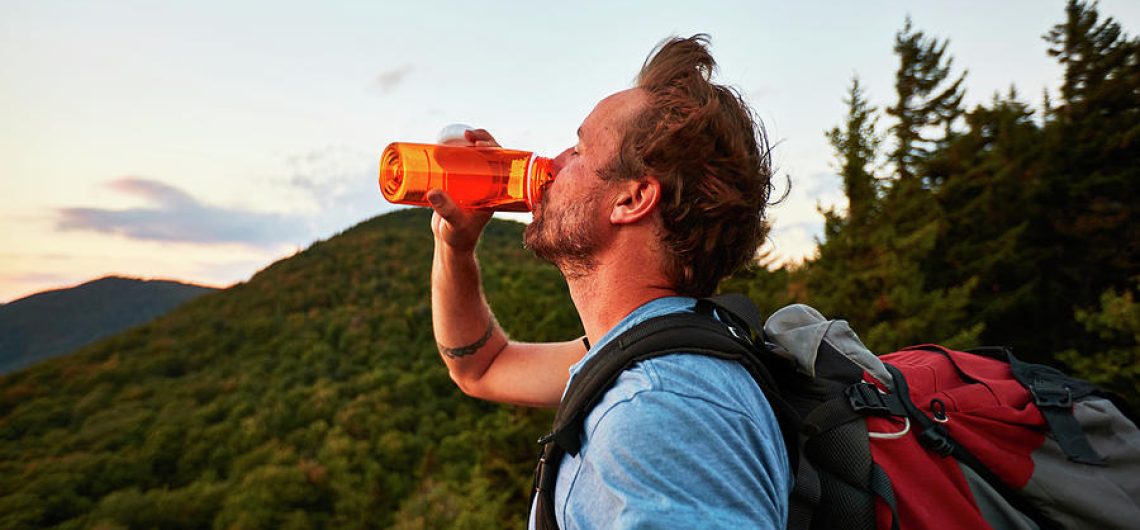Drinking water while climbing Kilimanjaro, Mount Kenya, Mount Meru, Rwenzori Mountains, Ol Doinyo Lengai, and Mount Elgon is of utmost importance due to the challenging conditions and high altitude.
Staying hydrated is one of the most important parts of climbing Everest since losing water can cause altitude sickness, which can be fatal. In this post, we’ll look at how climbers remain hydrated on Everest and the difficulties they have getting access to potable water.
It’s important to stay hydrated while climbing Kilimanjaro, Mount Kenya, Mount Meru, Rwenzori Mountains, Ol Doinyo Lengai, and Mount Elgon. The body requires water to operate properly, and at high elevations, sweating and breathing cause the body to lose more water than usual. Numerous symptoms, including headaches, weariness, disorientation, seizures, and even coma, can be brought on by dehydration. To prevent these symptoms and improve their chances of reaching the peak, climbers must make sure they are properly hydrated.
The following information emphasizes the significance of hydration, the risks of dehydration, and best practices for maintaining proper fluid levels:
You’ll hear it repeated many times a day – “Drink water.”
The phrase “Drink water” holds immense importance on Kilimanjaro due to the unique conditions of high-altitude trekking. One of the key guidelines for climbers is to consume a minimum of four liters of water per day. This is because the demand for fluids increases significantly at higher altitudes. Factors like exposure to the sun, physical exertion leading to sweating, digestion processes, urination, and even the inhalation of cold, dry air contribute to increased water loss.
Under normal circumstances, we lose approximately 2.5 liters of water daily. However, this amount is amplified during the ascent of a substantial peak like Kilimanjaro, Mount Kenya, Mount Meru, Rwenzori Mountains, Ol Doinyo Lengai, and Mount Elgon. Consequently, if not vigilant, dehydration can easily set in during high-altitude expeditions.
Why is Dehydration Dangerous?
Water, an essential element for human survival, is indispensable for our bodily functions. While the body can survive for weeks without food, it can only endure a few days without water. Our body’s composition is between 50% and 75% water, used in cells, organs, and tissues to regulate temperature and facilitate biological processes.
The absence of adequate water impairs the body’s efficiency, leading to imbalances in electrolytes and glucose levels. This situation triggers various symptoms. Even slight dehydration can hinder optimal performance. On a challenging terrain like Kilimanjaro, Mount Kenya, Mount Meru, Rwenzori Mountains, Ol Doinyo Lengai, and Mount Elgon where physical endurance is paramount, maintaining peak condition is crucial. Research indicates that even a mere 1% dehydration can negatively impact mood, attention, memory, and motor coordination.
In cases of severe dehydration, blood volume reduces. To compensate, the heart rate increases to maintain blood pressure. However, the heart is pumping denser and more concentrated blood, which strains the cardiovascular system.
Symptoms of Dehydration
Dehydration manifests through initial signs like thirst, reduced urine output, and darker urine color. Severe dehydration can lead to grave health complications and even fatality. Symptoms of worsening dehydration encompass fatigue, headaches, dry mouth, weakness, muscle discomfort, dizziness, nausea, and dry skin.
Interestingly, the symptoms of dehydration often overlap with those of Acute Mountain Sickness (AMS), also known as altitude sickness. While well-hydration is commonly linked with AMS prevention, scientific studies have not definitively proven this correlation.
Despite this, it’s strongly believed that dehydration undoubtedly impedes the body’s acclimatization process. Moreover, dehydration might obscure or exacerbate the symptoms of altitude sickness. Whenever climbers experience altitude sickness symptoms, drinking water is often recommended. Consumption of water has been observed to alleviate some AMS symptoms, such as headaches, within a relatively short time.
Best Practices for Staying Hydrated on Kilimanjaro
Tranquil Kilimanjaro recommends a daily water intake of 4-5 liters. Their gear list includes a water bladder (e.g., 3-liter CamelBak or Platypus) and a water bottle (e.g., 32 oz. Nalgene). Commence the day with both containers full to better monitor intake.
It’s essential to note that single-use plastic water bottles are not allowed on Kilimanjaro. Instead, use reusable containers like Nalgene bottles or water bladders.
To enhance recovery, adding electrolytes to your water bottle is recommended. Options like Gatorade packets, Nuun tablets, or GU Hydration tablets can be used. The inclusion of flavor often boosts water consumption.
Rather than relying solely on thirst, make drinking water a habitual practice. Consistently sip water from the bladder throughout the day. Ensure you drink water during every rest break, from either the bladder or water bottle. Drinking around 1/2 liter per break can lead to effortlessly consuming 2-3 liters by the afternoon.
Later in the day, strive to drink two more liters to meet the 4-5 liter target. Achieve this by consuming one liter upon reaching camp before dinner, and another liter before sleeping. This is an opportune time to introduce additional electrolytes for overnight recovery.
Hydration remains an integral aspect of a successful Kilimanjaro, Mount Kenya, Mount Meru, Rwenzori Mountains, Ol Doinyo Lengai, and Mount Elgon climb. Following these best practices will aid in mitigating the risks of dehydration, enhancing performance, and supporting your body’s adaptation to the challenging altitude.
![]()


Comments